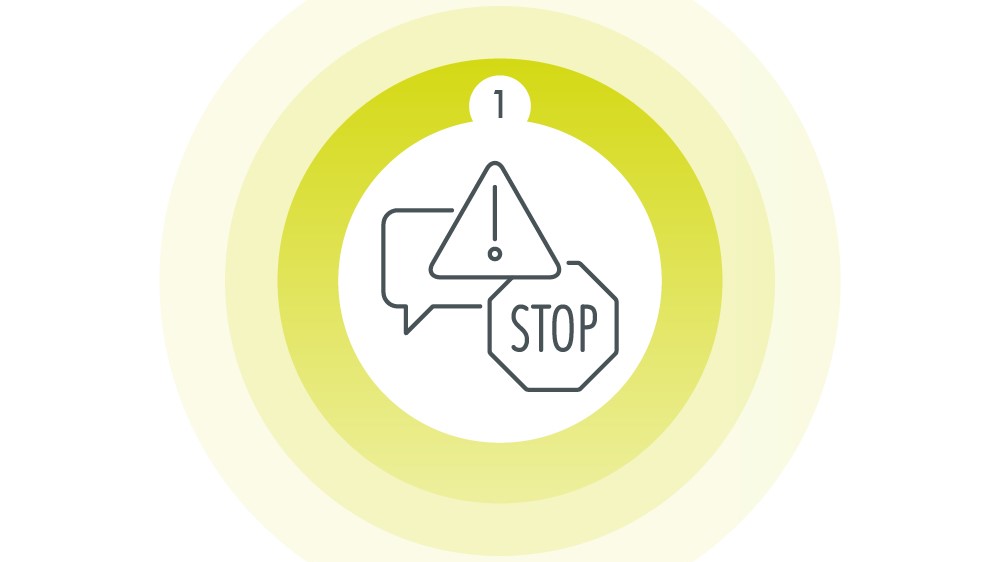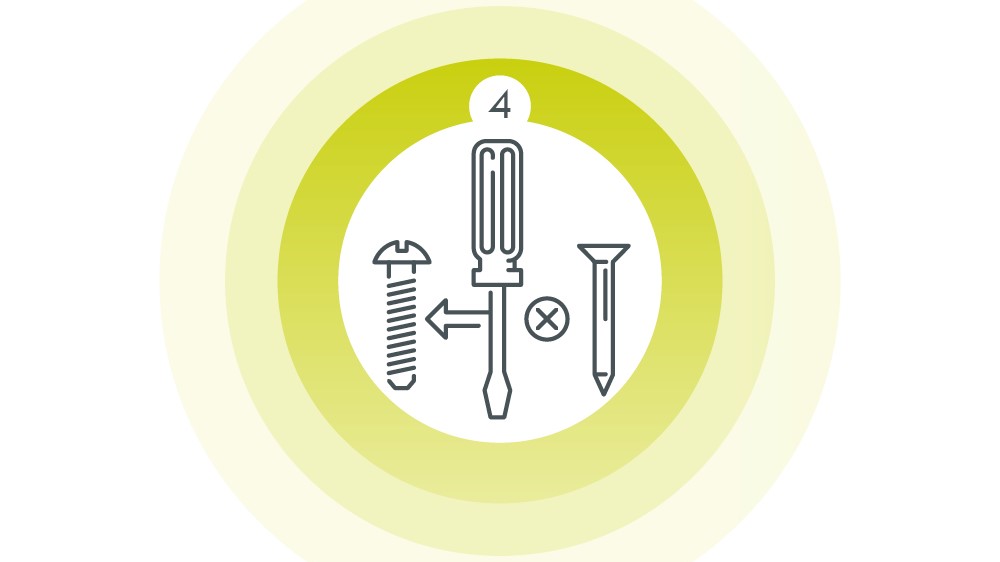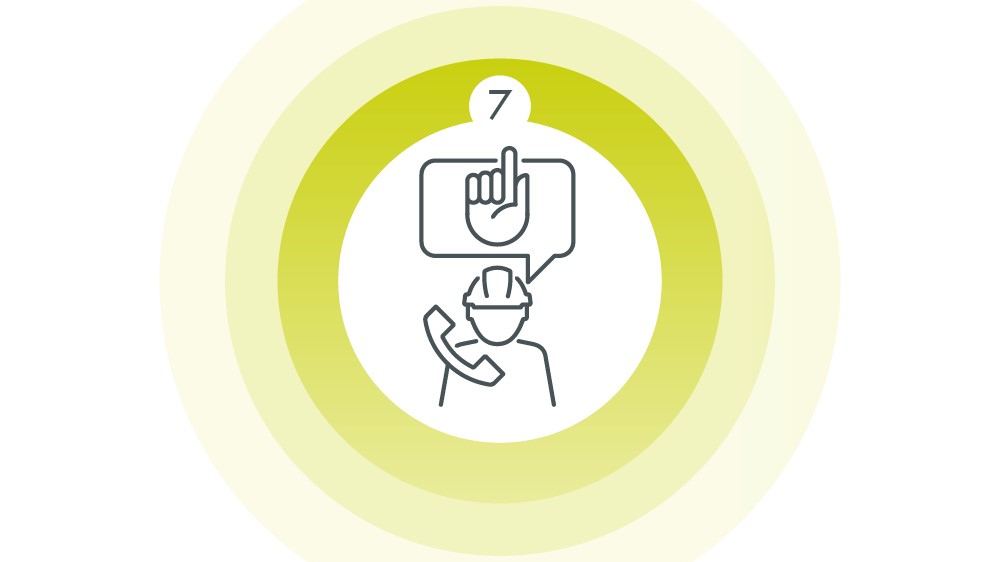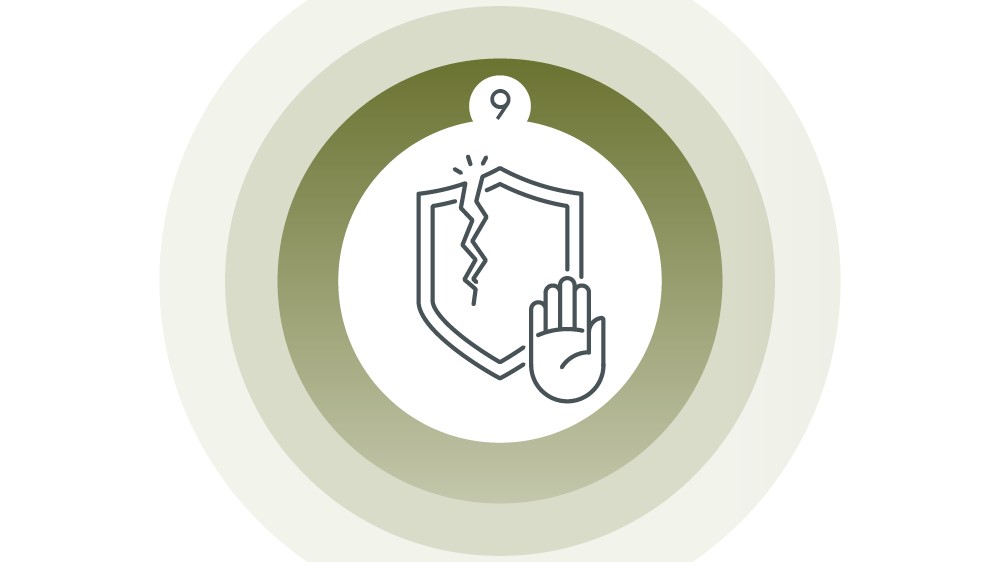- Letter from the Board of Directors
- Management report
- Key figures
- Foundations for success
- Business model
- Strategy 2030+
- Risk management
- Stakeholders
- TCFD report
- Sustainability
- ESG governance
- Material topics and SDGs
- Economic impact
- Environmental impact
- Social impact
- Governance
- Corporate governance
- Board of Directors
- Management Board
- Additional information
- Remuneration
- Remuneration report
- Notes to the report
- CO reference table
- Statement by the Board of Directors
- GRI content index
- Due diligence and transparency
- Financial report 2024
- Vetropack Group
- Consolidated balance sheet
- Consolidated income statement
- Consolidated cash flow statement
- Changes in consolidated shareholders’ equity
- Consolidation principles
- Valuation principles
- Notes
- Ownership structure
- Company participations
- Alternative performance measures
- Five-year overview
- Vetropack Holding Ltd
- We aim to achieve a TRIR value of 2.0 by 2030
- TRIR value of 1.90 achieved in 2024
- Safety Minutes and Safety Days to raise awareness about occupational safety
- Nine golden safety rules and four safety principles
- Slogan: ‘I’m more important than production’
- Health, safety and environmental policy
- TRIR, the key occupational safety indicator, is an element of the remuneration system for the extended Management Board
- We shall endeavour to reduce the Group-wide TRIR value to 2.0 by 2030.
- I keep to the rules
- I protect myself
- I don’t enter into any risks
- I look out for others
- At Group level, the Director Corporate Development and Integrated Management Systems (IMS) is directly responsible for quality, occupational safety, sustainability, and environmental protection.
- The Group Health and Safety Manager reports to this corporate function and, together with the Director Corporate Development and Integrated Management Systems, coordinates the activities of the Safety Managers at the individual plants.
- Plant managers and team leaders are responsible for applying and correctly implementing the defined safety standards.
- An occupational safety working group provides the setting for the Safety Officers of the plants and the Group Health and Safety Manager to exchange ideas across all sites. This working group is responsible for internal audits and for evaluating the occupational safety concepts.
- Employees are responsible for complying with the safety rules in their daily work, and for promoting mutual awareness.
“
Work in glass production is physically taxing, and it entails hazards. We aim to improve safety at these workplaces through automation and by providing training and equipment.
Nenad Horvat, Safety Manager
SustainabilityOccupational health and safety
Production of our glass packaging entails hazards for the employees who work in our plants. This makes it all the more important for the entire company to accord the highest priority to compliance with occupational safety legislation, and to create overall conditions that enable work to be carried out safely – fully in keeping with our principle: ‘I’m more important than production’.
High temperatures, noise, emissions, operation of machines and handling of chemical substances present risks to the safety and health of our employees in glass production. This remains true even though we invest in the latest technology and equipment, and all our plants meet the highest possible occupational safety standards. Inadequate safety and work-related illnesses or absences would impair our employees’ wellbeing and restrict their productivity – also leading to financial disadvantages for Vetropack. Occupational safety and health protection are essential to our business success. For this reason, we accord top priority to occupational safety measures that go beyond the minimum legal requirements. The perception of the Vetropack brand, combined with the highest safety standards, also helps us to attract new talents who are enthusiastic about glass production.
Concepts, policies and measures
Occupational safety is strategically relevant
We are convinced that a safe and accident-free work environment is crucially important for our employees’ wellbeing and for Vetropack’s business success. For this reason, we have defined the following goal:
This is why it is particularly important to embed our safety culture by means of awareness-raising measures, regular training, and systematic collection of data on accidents and near misses. Also, the TRIR value (Total Recordable Incident Rate), or accident frequency rate, is linked to remuneration for our Management Board and senior management.
Safety culture, rules and principles
It is only possible to manufacture high-quality glass packaging if an established safety culture is in place. This is why we invest in a corporate culture that focuses on raising awareness about work-related hazards.
Our central occupational safety guidelines comprise four safety principles and nine safety rules.
The four safety principles are:
The graphic below shows the content of our nine golden safety rules.
)
Rule 1: I respect procedures, signals and warnings )
Rule 2: I respect qualifications and authorisations )
Rule 3: I respect the LOTO (Lock Out Tag Out) procedure )
Rule 4: I use appropriate equipment )
Rule 5: I wear my personal protective equipment (PPE) )
Rule 6: I never disable or bypass a safety device )
Rule 7: I report unsafe conditions or behaviour )
Rule 8: I feel responsible for others )
Rule 9: I stop work if I can’t work safely In addition, we familiarise our employees with a key principle: ‘I’m more important than production’. If employees perceive a situation as a hazard to their safety or health, they are required to discontinue their work.
According to our Procurement policy (see Supply chain management), we always take account of safety and health aspects when purchasing new machines and production plant and, whenever possible, we give preference to low-pollutant and low-noise equipment.
Systematic occupational safety management
Our occupational safety management systems comprise standardised processes and are geared to continuous improvement. Our plants at Pöchlarn (Austria), Kremsmünster (Austria), Kyjov (Czech Republic), Nemšová (Slovakia) and Hum na Sutli (Croatia) have occupational safety management systems certified to ISO 45001 in place. The other plants (except Chișinău) have equivalent systems based on the ISO standard. We are planning certification to ISO 45001 for our Boffalora plant in 2025.
We control our occupational safety management as follows:
Principles that apply throughout the company are enshrined in Vetropack’s Health, safety and environmental policy, which obliges the plants to develop and implement appropriate concepts.This policy obliges the plants to develop and implement appropriate concepts. Within the scope of the policy, we provide our employees with adequate protective equipment and offer awareness-raising programmes to draw their attention to hazards and how to deal with them.
We carry out regular internal and external safety audits to assess the effectiveness of our safety concepts and measures. When internal audits take place, the safety experts at one plant examine the processes and concepts at another plant and identify potential for improvement. External audits serve the purpose of certification (or re-certification).
Within the scope of our occupational safety system, we undertake standardised risk analyses in accordance with the principles of ISO 45001. We urge our employees to report near misses to their line manager or the local Safety Manager – because analysing near misses helps to prevent accidents. We apply a standardised process to evaluate the events involved in accidents so as to prevent similar occurrences in the future. For this purpose, regular dialogue is maintained between the Occupational Safety Managers at the individual plants. The topic of occupational safety is also discussed at management meetings.
As a preventive measure, employees with particular exposure are required by law to undergo regular occupational health screenings. If employees show the first signs of an occupational illness or disease, we support them with adapting their activities.
Measures to enhance occupational safety
In addition to our occupational safety policy and our multi-level occupational safety management system, we provide regular training for our production employees. To ensure that our employees are familiar with the nine safety rules, we provide supplementary training as an element of the Safety Days held at every site.
Carelessness and time pressure are reasons for violating safety rules and disregarding principles that are essentially familiar. We deliberately aim to remedy such lapses by implementing what is known as the Safety Minutes philosophy. Safety Minutes are brief training sessions lasting around ten minutes that concisely convey relevant safety information and instructions on behaviour. The Safety Minutes philosophy encourages employees to make each other aware of work-related hazards and compliant behaviour. The aim is to ensure that zero tolerance for rule violations is implemented consistently by all functions in everyday working life, so Group-wide awareness is fostered.
Some of our plants have their own firefighters who take action to prevent fires and dangerous situations. They carry out regular inspection tours of the plants to identify potential risks. They liaise closely with the local fire brigade and can react quickly in an emergency. But as well as taking action in emergencies, the fire brigade also trains employees on dealing with hazards and sensitises them so they can actively avoid situations involving risks. Sites without their own fire brigade collaborate closely with the local fire brigade.
To ensure the highest level of occupational safety, it is important that our employees concentrate when carrying out the work steps and that they support one another. One hazard to employees that should not be underestimated originates from logistics activities in the warehouses. In our Boffalora plant, we have opted to implement a fully automated state-of-the-art warehouse. This makes it possible to reduce hazardous situations on the human-machine interface. Also see Supply chain management on this topic.
Promoting mental health
Our occupational safety systems are mainly geared to production and production-related areas. But protecting mental health is just as crucial in this context, – and this applies to all employees. Mental health was also identified as a relevant issue in the employee survey conducted in the reporting year. In future, we intend to manage this issue more strategically and to develop Group-wide concepts. At present, the services we offer in this area are largely limited to local programmes at individual locations. Some examples of activities that positively impact mental health are described below.
Our Bülach site launched a collaboration arrangement with the Wisli Foundation in 2023. For more than 35 years, this foundation has been advocating social and vocational integration for people with mental impairments. As part of this collaboration, we organise events focusing on physical health, and we make our employees aware of early warning signs.
To support employees in Ukraine who have been impacted by the war, we set up the Vetropack Foundation Gostomel in 2022 with the help of donations. The Foundation has the goal of providing support for Ukrainian employees whose house or apartment was destroyed in the war, or who suffered severe injuries. The Foundation also includes a psychological support programme.
Progress and events in the reporting year
Further standardisation of safety conceptsDuring the year under review, we decided to standardise and continue improving our occupational safety processes, policies and guidelines across all our plants from 2025 onwards, in collaboration with an external specialist. To record the current status, we shall begin the project by undertaking analyses at all our locations. This is because the safety concepts at individual plants differ from one another at present, due to local occupational safety legislation and varying levels of safety awareness in specific countries. Implementation of best-practice standards is intended to standardise occupational safety management in its entirety, ranging from standardised work instructions and personal protective equipment to employees’ conduct. Our goal is to define our safety standards more systematically throughout the Group in future, and to balance out special country-specific features that exist at present.
NIS glass forming machines to improve safetyAs described in the Climate protection section, one new melting furnace and two servo-driven glass forming machines were commissioned at the start of 2024 in Kyjov (Czech Republic). Vetropack Straža (Croatia) also introduced a NIS glass forming machine. As well as delivering impressive efficiency, the servo-driven NIS glass forming machines ensure greater safety for our employees because they require less human intervention. Moreover, employees are exposed to fewer noise emissions – with positive impacts on health.
Performance indicators
Key indicators for occupational health and safety
Change
2024 2)
2023
Number of fatalities resulting from work-related injuries
-
-
-
Number of high-consequence work-related injuries (excluding fatalities)
-
-
-
Number of recordable work-related injuries
– 37%
59
93
Total work days lost due to injuries and occupational diseases
– 33%
1 949
2 908
Total Recordable Incident Rate (TRIR) 1)
– 33%
1.90
2.85
Total Recordable Incident Severity Rate (TRISR) 1)
– 39%
56.00
91.21
Percentage of operational facilities that are certified to ISO 45001 certified
12%
63%
56%
1) per 100 full time equivalents (FTE)
2) St-Prex, which was closed in the year under review, is not included in this metric.
TRIR per 100 FTE and target
TRISR per 100 FTE
Indicators relating to occupational safety are heavily dependent on employee behaviour, so they are often subject to fluctuations. Long-term trends offer better insights into the efforts put in over many years and the effectiveness of safety concepts and measures.
- Vetropack Group
- Corporate governance
- Governance
- Social impact
- Environmental impact